DIHYDROETHIDIUM
- CAS NO.:104821-25-2
- Empirical Formula: C21H21N3
- Molecular Weight: 315.41
- MDL number: MFCD00192079
- SAFETY DATA SHEET (SDS)
- Update Date: 2023-04-23 13:52:06
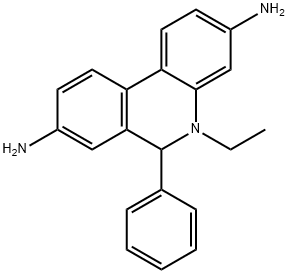
What is DIHYDROETHIDIUM?
Chemical properties
DIHYDROETHIDIUM is pink to purple fine crystalline powder
The Uses of DIHYDROETHIDIUM
DIHYDROETHIDIUM is redox indicator. Blue fluorescence until oxidized to ethidium. Can be used for detecting superoxide radical in cells, tissues and organisms.
The Uses of DIHYDROETHIDIUM
Dihydroethidium, also known as hydroethidine, is a dye that can permeate viable cells and accumulate in the nucleus after it is dehydrogenated to ethidium bromide and is used to measure oxygen reduction in phagocytes during respiratory burst. In the presence of an oxidant it will fluoresce and has been used as a dye in flow cytometry. Studies have used Dihydroethidium to study alveolar macrophages, blood leukocytes, and epithelial cells, among others, and has be used to measure intracellular H2O2 and O2-, and reactive oxygen. Dyes and metabolites.
What are the applications of Application
Dihydroethidium is an effective dye used to measure oxygen reduction in phagocytes during respiratory burst
Properties of DIHYDROETHIDIUM
| Boiling point: | 580.4±50.0 °C(Predicted) |
| Density | 1?+-.0.06 g/cm3(Predicted) |
| storage temp. | −20°C |
| solubility | acetonitrile: soluble |
| form | powder |
| pka | 5.30±0.40(Predicted) |
| color | Pink to dark brown |
| λmax | 355 nm |
| BRN | 5107482 |
| Biological Applications | Apoptosis assay; generating and detecting reactive oxygen species (ROS); detecting nucleic acids,cells; measuring respiratory burst; superoxide indicator; viability assay |
Safety information for DIHYDROETHIDIUM
Computed Descriptors for DIHYDROETHIDIUM
New Products
Tert-butyl bis(2-chloroethyl)carbamate (S)-3-Aminobutanenitrile hydrochloride N-Boc-D-alaninol N-BOC-D/L-ALANINOL N-octanoyl benzotriazole 3,4-Dibenzyloxybenzaldehyde 4-Hydrazinobenzoic acid Electrolytic Iron Powder 1,1’-CARBONYLDIIMIDAZOLE R-2-BENZYLOXY PROPIONIC ACID 4-HYDROXY BENZYL ALCOHOL 1,1’-CARBONYLDI (1,2-4 TRIAZOLE) S-2-CHLORO PROPIONIC ACID (2-Hydroxyphenyl)acetonitrile 4-Bromopyrazole 5-BROMO-2CYANO PYRIDINE 5,6-Dimethoxyindanone 5-broMo-2-chloro-N-cyclopentylpyriMidin-4-aMine 3-(2,4-Dimethoxybenzyl)dihydropyrimidine-2,4(1H,3H)-dione 6-Bromo-3-iodo-1-methyl-1H-indazole N-Boc-L-proline methyl ester 2-(BOC-Amino)4-picoline 1-(4-Methylphenylsulfonyl)-1H-1,2,3-benzotriazole 1-(2-Chlorobenzyl)-4-nitro-1H-pyrazoleRelated products of tetrahydrofuran
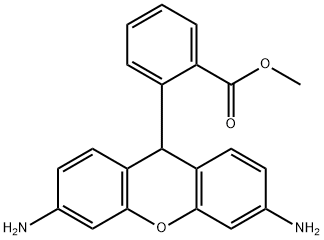
![DHR 6G [DihydrorhodaMine 6G]](https://img.chemicalbook.in/CAS/20180808/GIF/217176-83-5.gif)
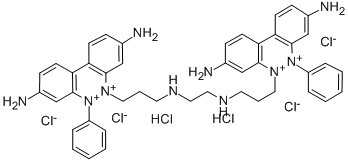

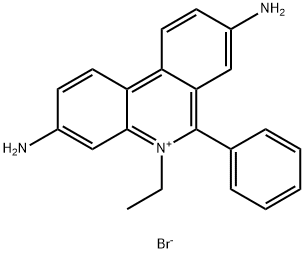
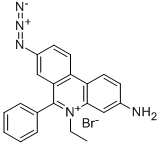
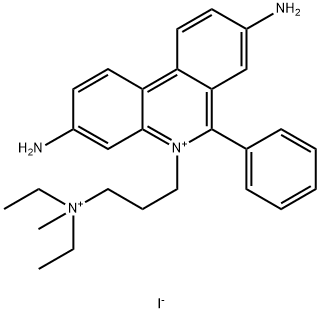
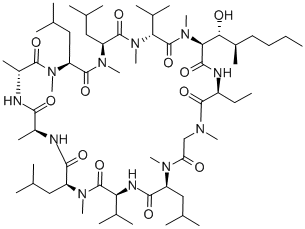
You may like
-
 Dihydroethidium CAS 104821-25-2View Details
Dihydroethidium CAS 104821-25-2View Details
104821-25-2 -
 Dihydroethidium CAS 104821-25-2View Details
Dihydroethidium CAS 104821-25-2View Details
104821-25-2 -
 Ste-Glu-AEEA-AEEA-OSUView Details
Ste-Glu-AEEA-AEEA-OSUView Details
1169630-40-3 -
 1446013-08-6 Fmoc-His-Aib-OH TFA 98%View Details
1446013-08-6 Fmoc-His-Aib-OH TFA 98%View Details
1446013-08-6 -
 127464-43-1 99%View Details
127464-43-1 99%View Details
127464-43-1 -
 Chloro Uracil 99%View Details
Chloro Uracil 99%View Details
1820-81-1 -
 2-ETHYLPYRIDINE 100-71-0 99%View Details
2-ETHYLPYRIDINE 100-71-0 99%View Details
100-71-0 -
 13162-05-5 99%View Details
13162-05-5 99%View Details
13162-05-5